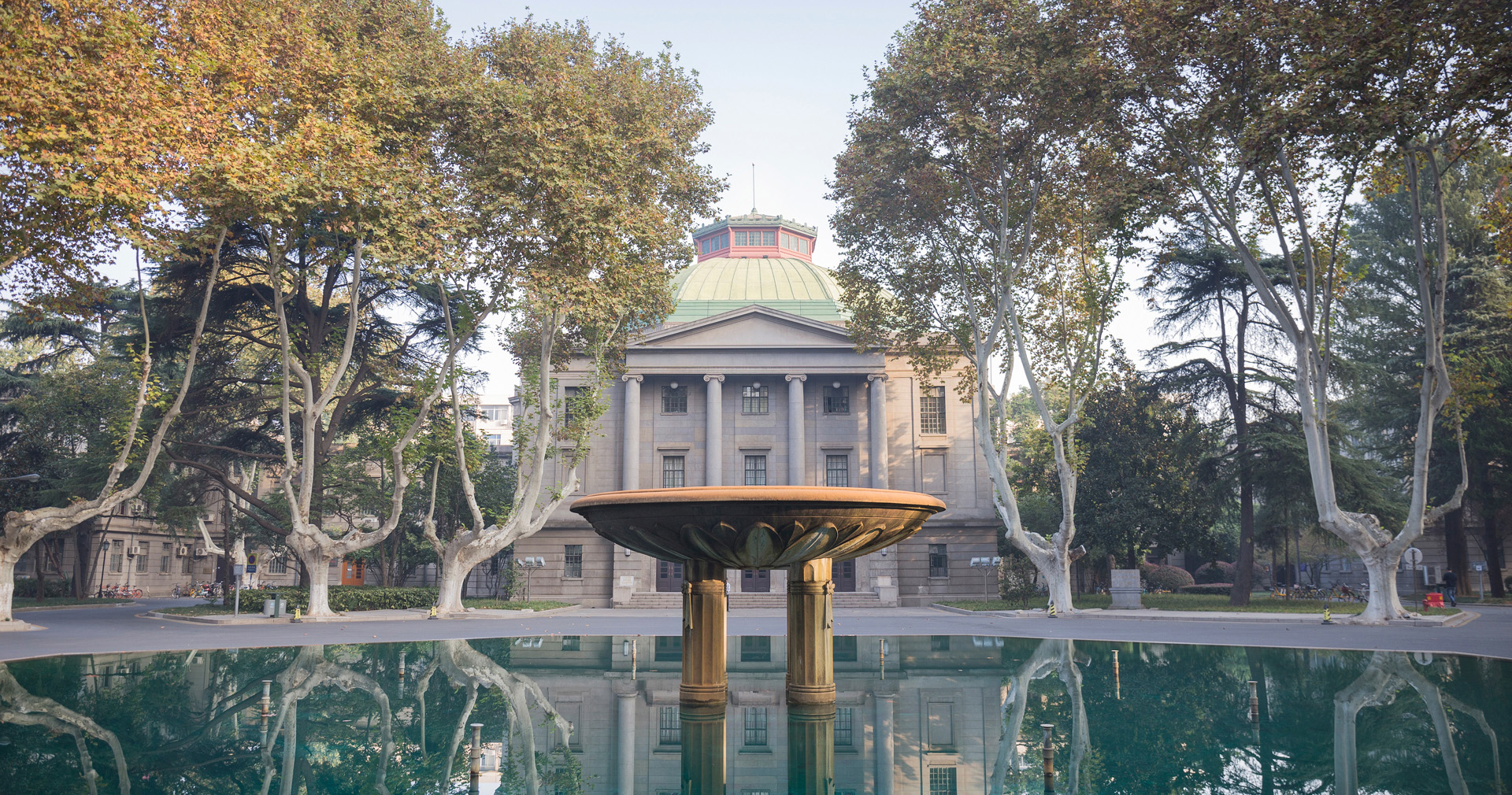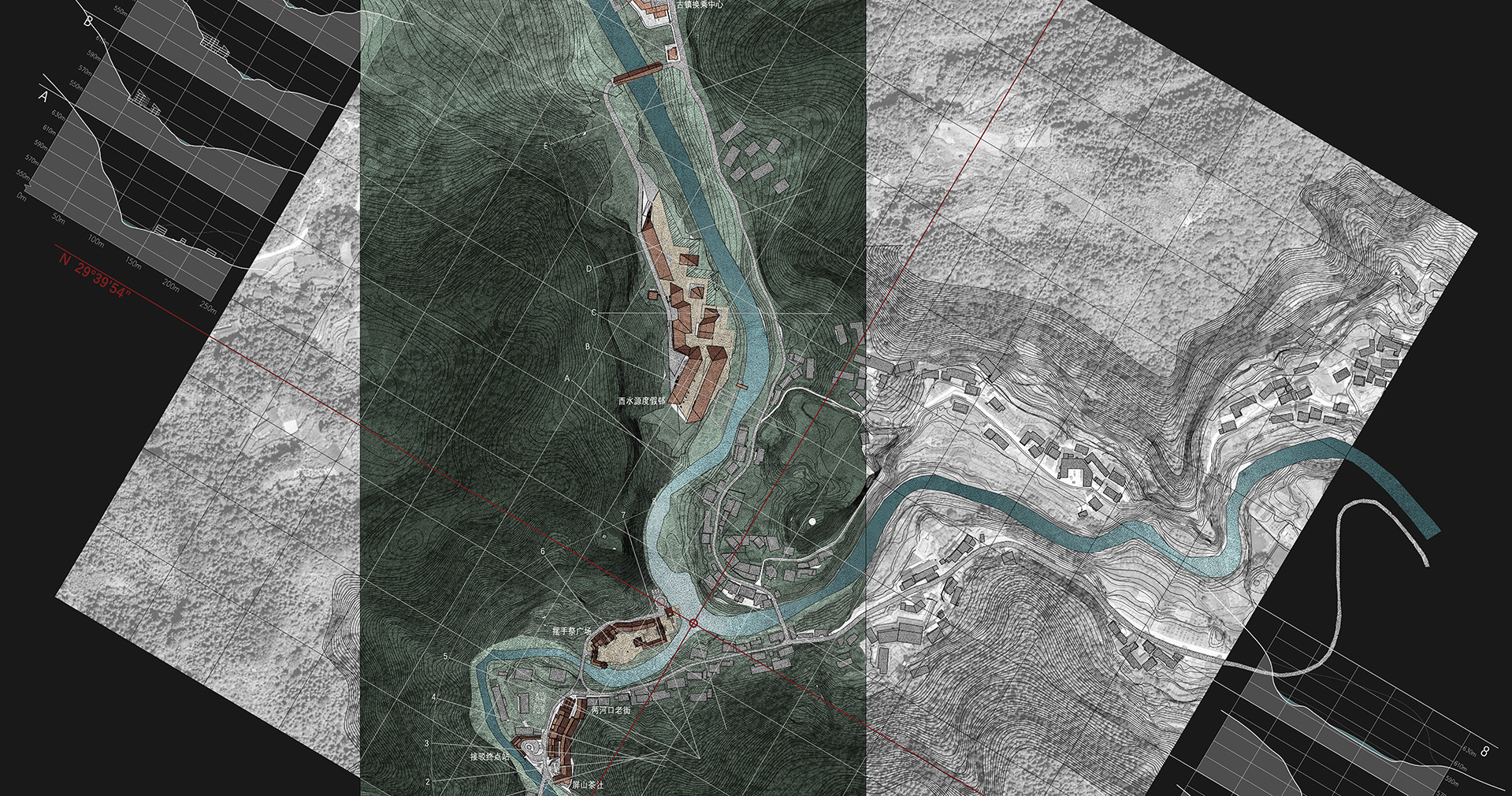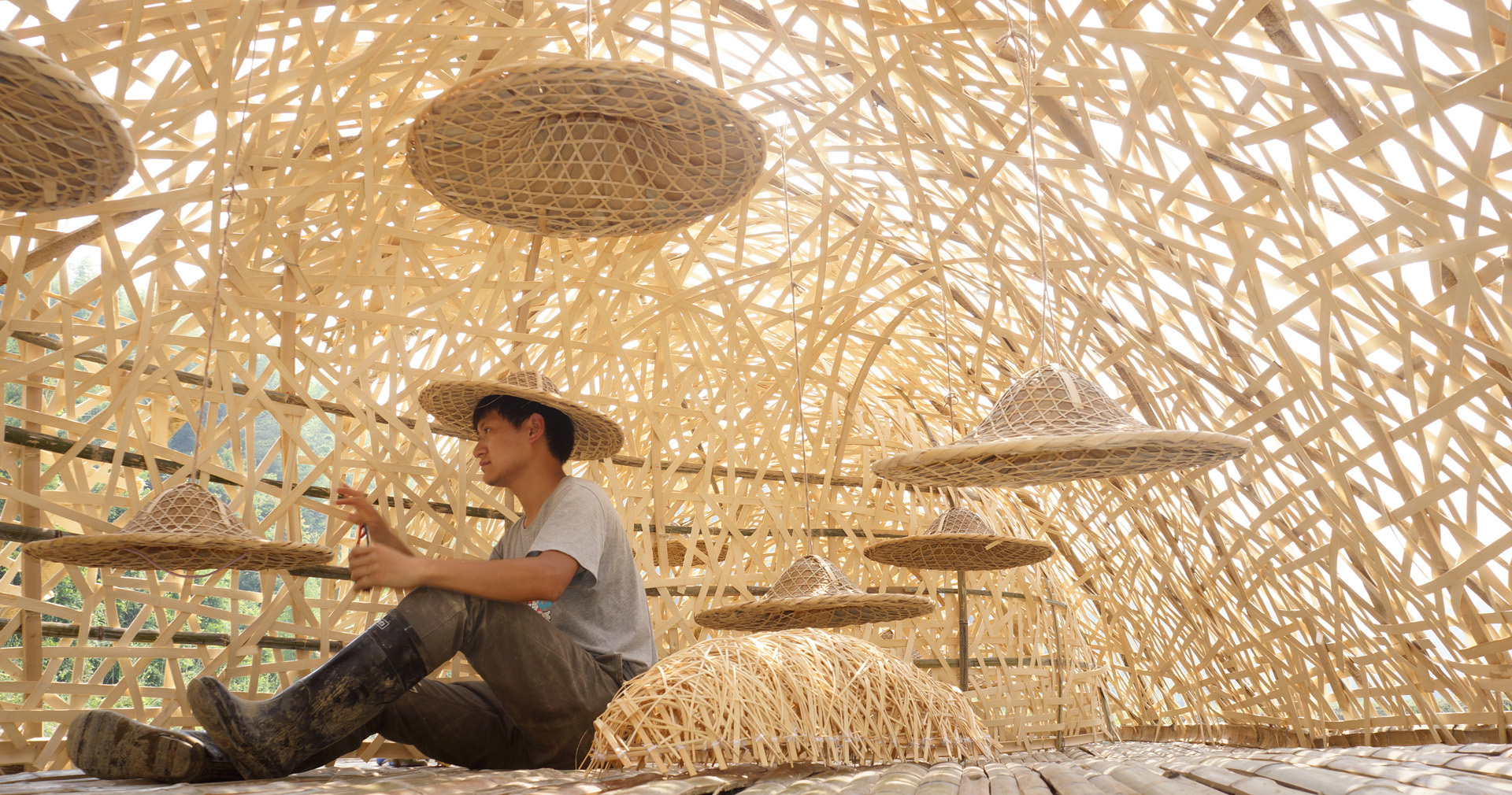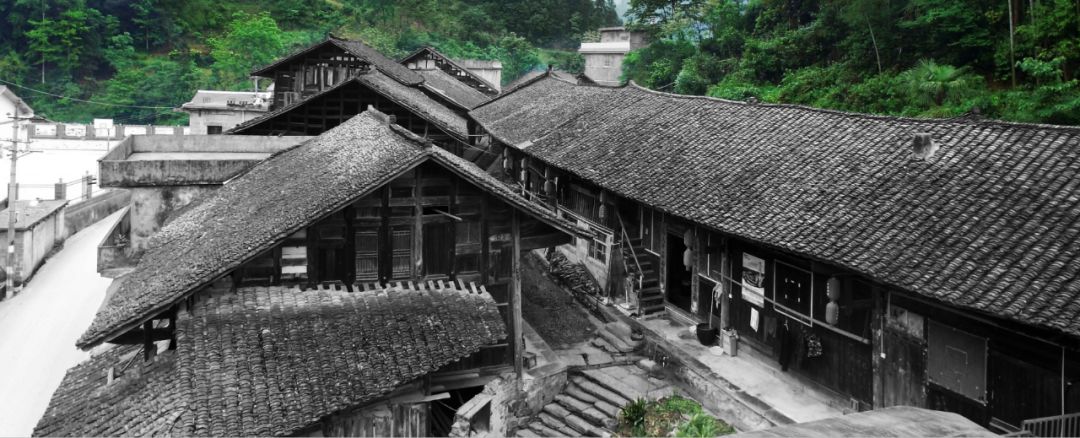
Lianghekou: Regenerationof an AncientTujia Village along Salt Road JointDesign Teaching Studio
Lianghekou: Regenerationof an AncientTujia Village along Salt Road
JointDesign Teaching Studio
Southeast University
IUAVUniversitàIuav di Venezia
Huazhong University of Science and Technology
Chongqing University
1.Studio Introduction
Lianghekou Village, located in XuanenCounty, Enshi Tujia and Miao Autonomous Prefecture, Hubei Province, was acommercial village along the ancient salt road during the Ming and Qing dynasties.The one-hundred-meter street, which typically embodies the tectonic characteristicsof Tujia and Miao stilt house and the settlement pattern of commercialvillages, has been well preserved. As a result of population loss andcommercial decline, the once thriving ancient village is suffering from the decay.
At present Lianghekou Village is embracing theopportunity of development. Tujia villages represented by the national heritageof Pengjiazhai is attracting the attention from the out world. The opening ofthe highway in 2019 will bring numerous visitors to this hidden salt roadvalley. How to avoid superficial consumption and preserve the core value of thenational cultural heritage in the rapid development of tourism, so as toregenerate the declined ancient village, is not only the topic of this jointteaching studio, but also the common challenge faced by human culturalheritages worldwide, including the city of Venice.
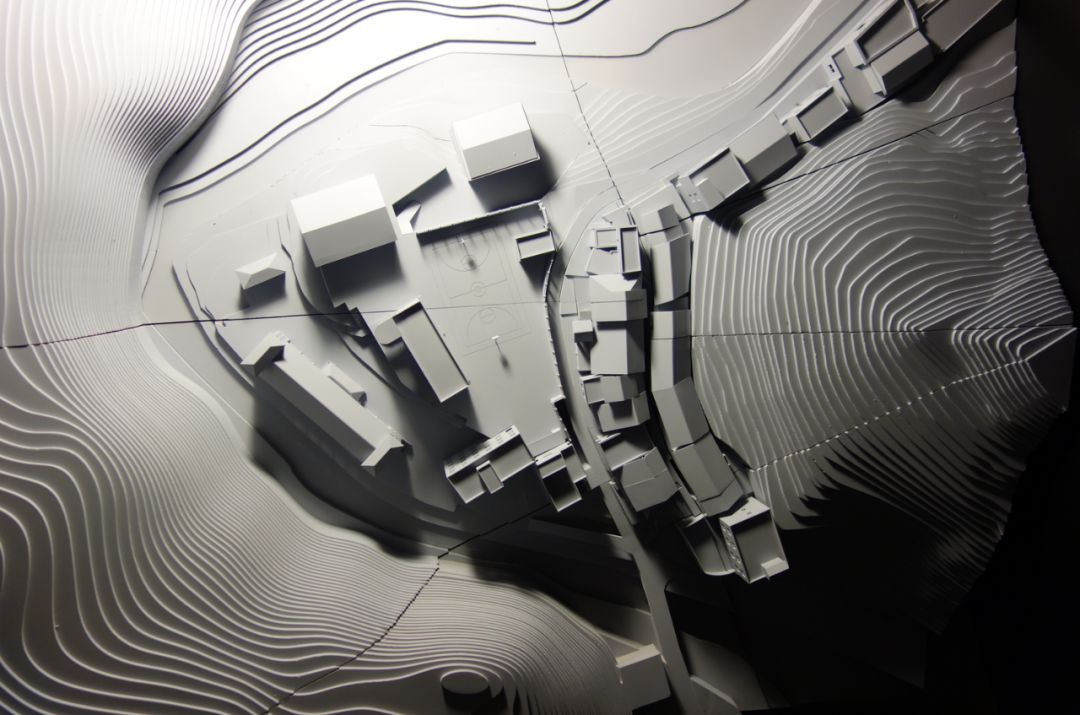
2.Objectives
To demonstrate the power and responsibilityof architecture in face of the increasingly endangered and fragile cultural heritage.
To seek are silient discipline ofarchitecture, which will not miss the opportunities brought by tourismdevelopment, but also preserve and continue the authenticity andcultural identity of historical heritage.
3.Course Schedule
The lanuching ceremony of the joint studio of four international schools was held in Pengjiavillage, Enshi Tujia Autonomous Prefecture, in Hubei Province.
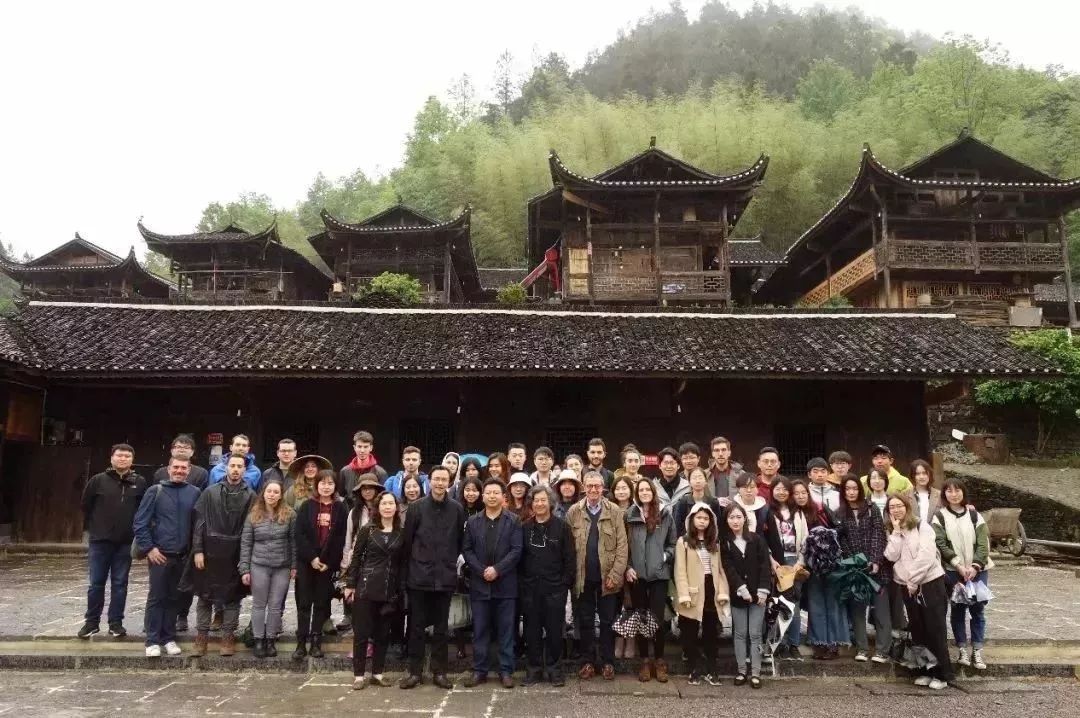 .
.

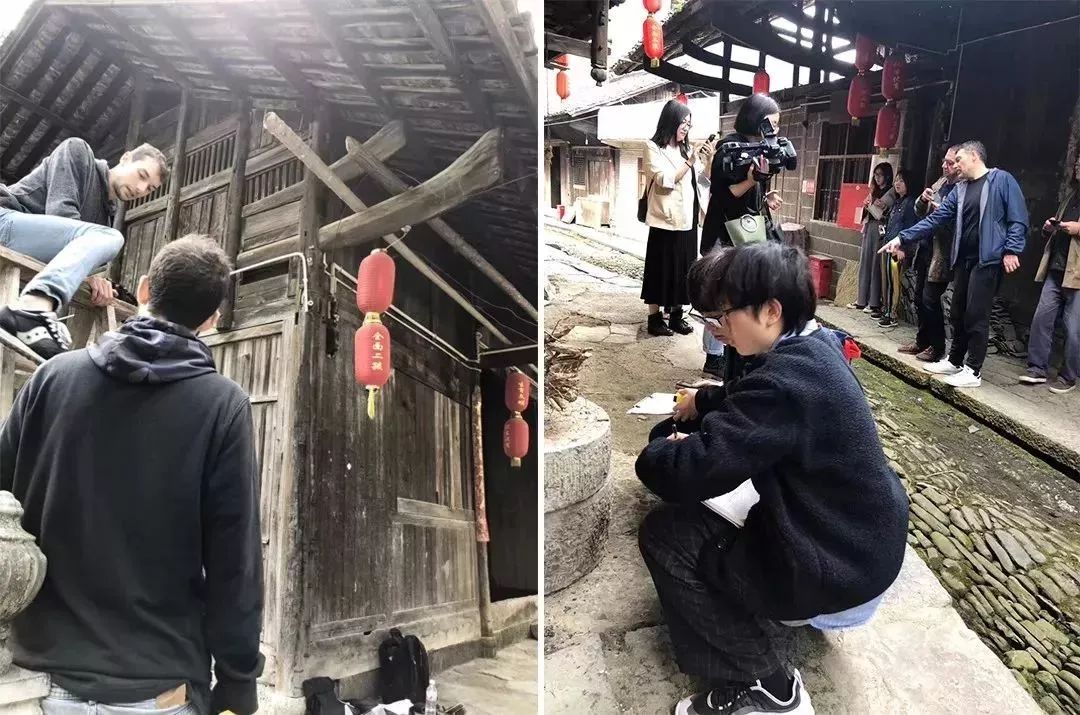 e
e
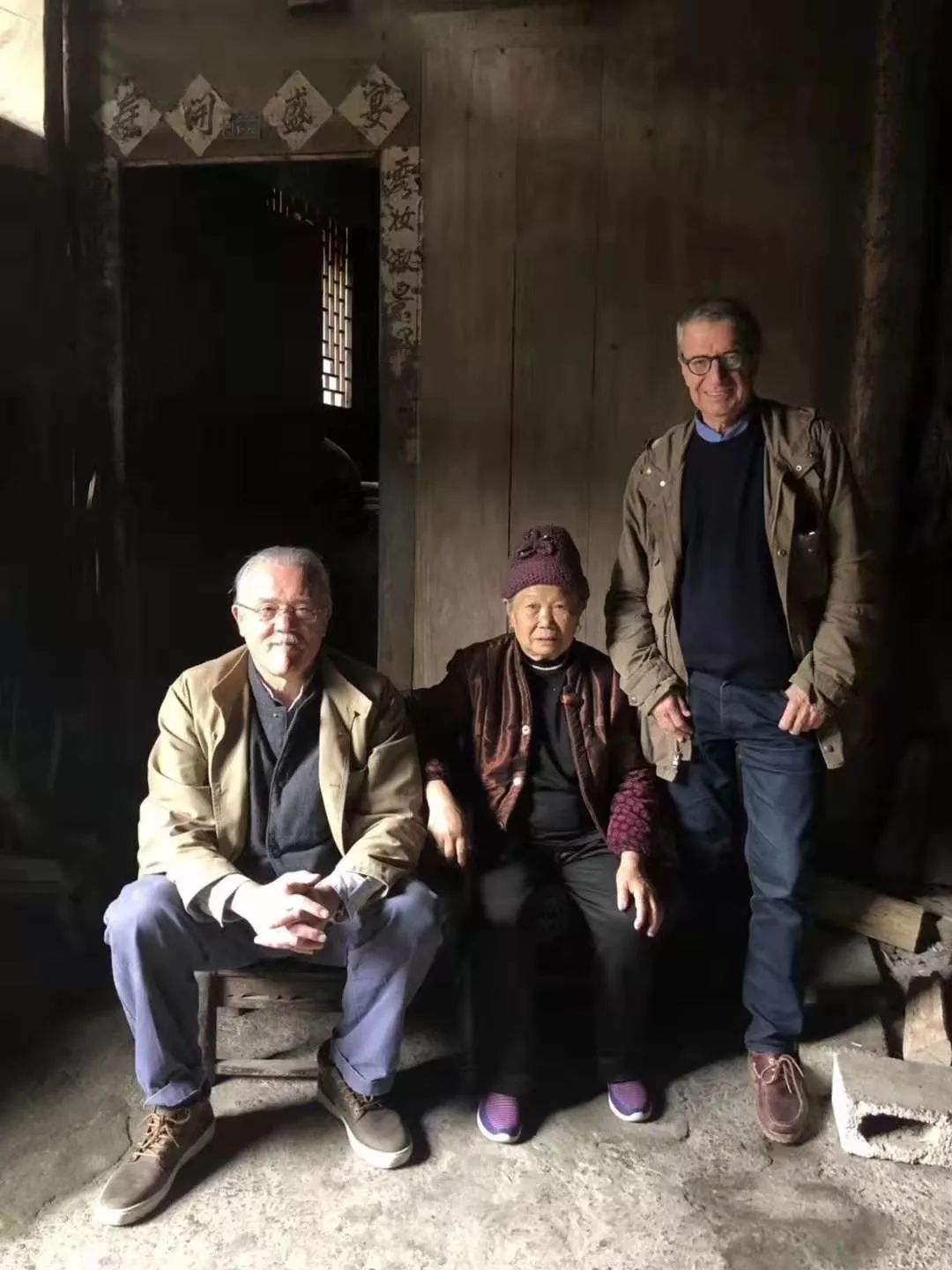
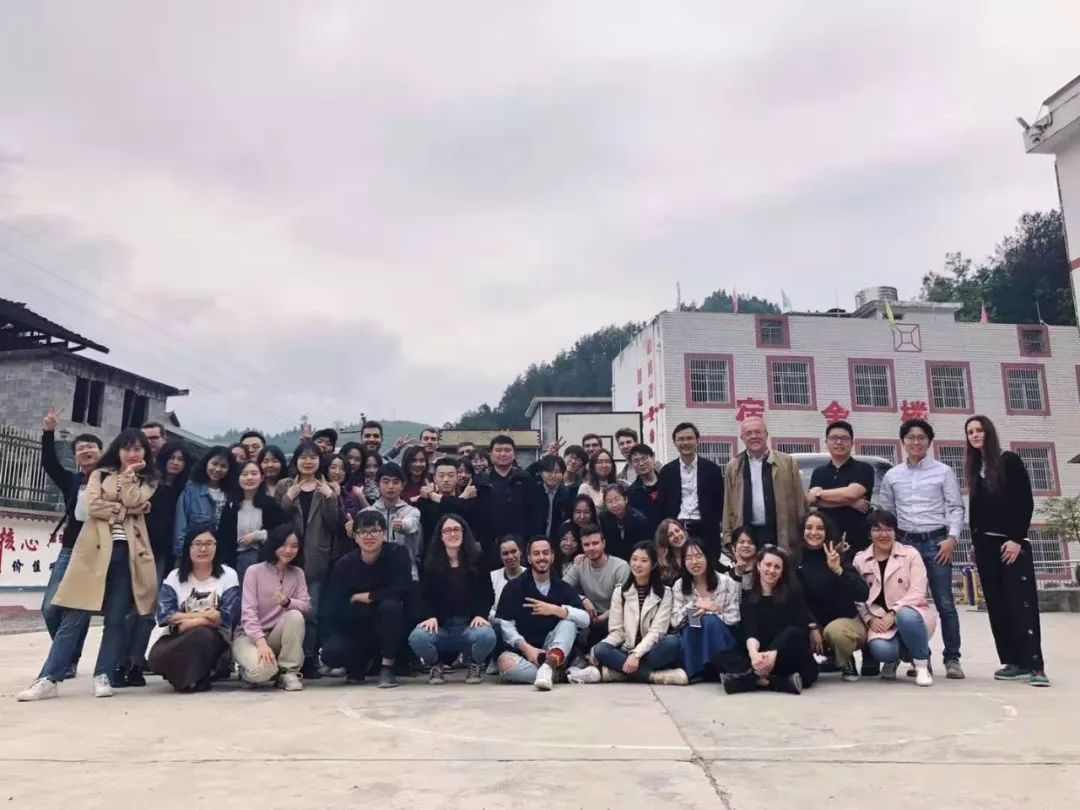
Four universities carry out teaching activities respectively from May to June,2019
Deepening the design of the works in IUAV from 10th June to 13rd June, 2019
Presentation of the studio design in Tufuri Hall of IUAV on 4th June, 2019
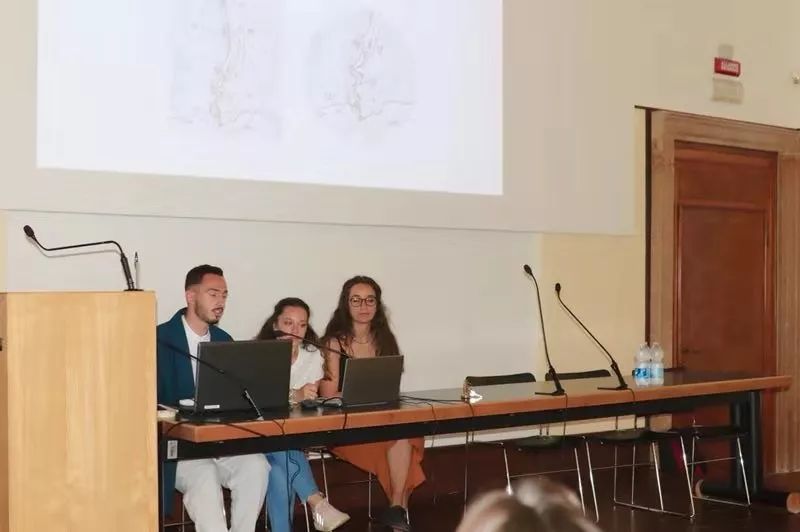




4.Team Works
G1/SEUTimber Topology: From Daily Life to Festival
The traditional stilt-style timber buildingin south China, with the separation of load-bearing system and envelope system,presents flexibility, variability and adaptability in space and structure. As vernaculararchitecture all over China, the streets of Tujia Villages are important placesfor collective life. The changeability and flexibility of stilt-style timber makethe public space show a charming adaptability, whose form changes with people'slifestyle. Three typical states of Tujia life were observed in the fieldinvestigation: daily, fair and celebration. They require different publicspaces. This design studies Lianghekou village as a whole construction system,with its fixed and variable different components. By using its dismountableconstruction mode, the topological deformation of a structural system adapts toand carries different space requirements of daily life, rural market andfestival celebration.
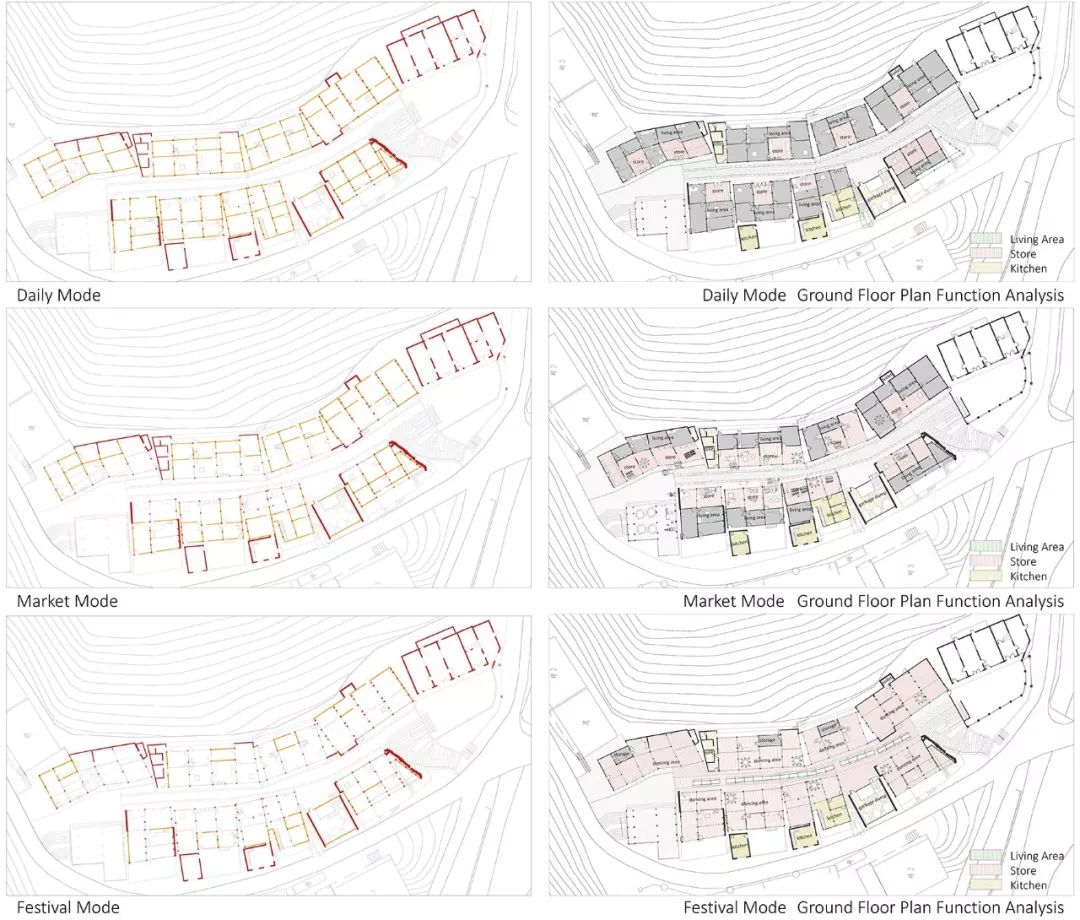
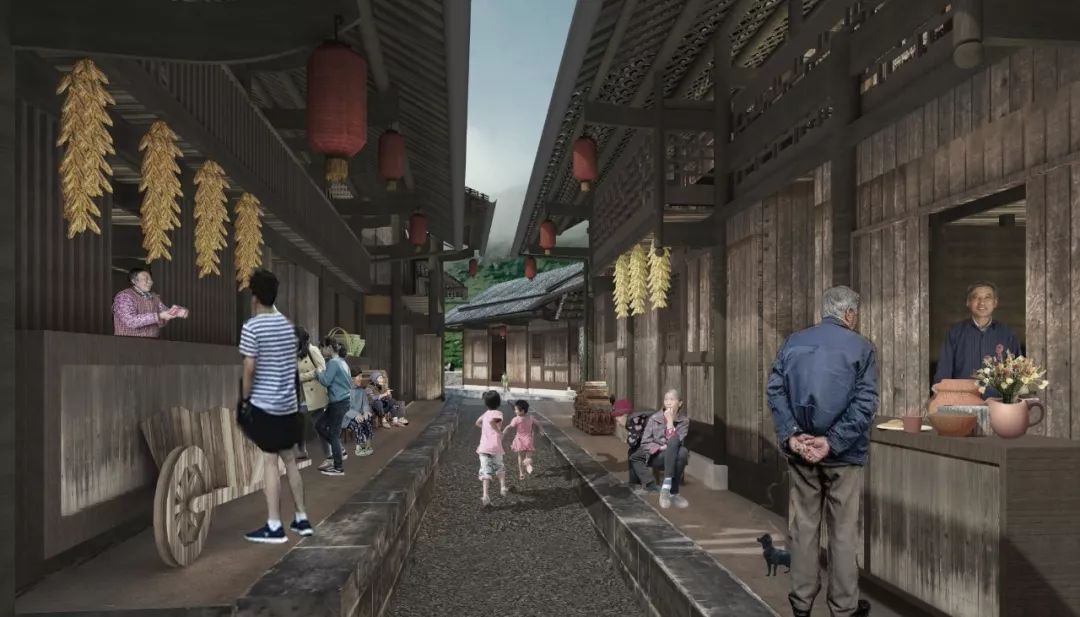

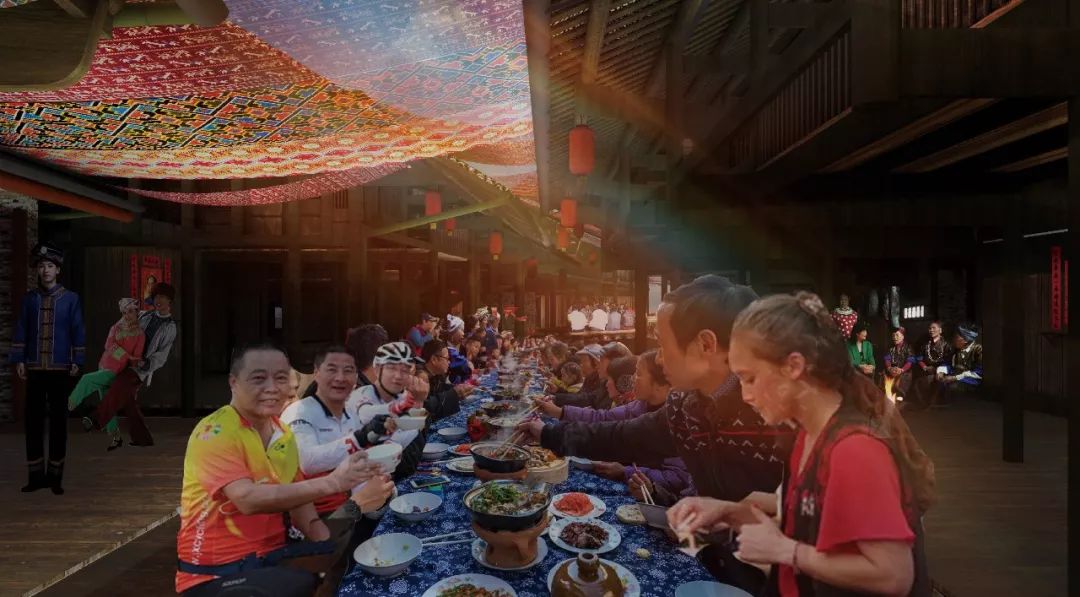
G2/SEU:TUJIAFolk Art Village——Reconstructionof Civic Space andRenovation of TypicalStilted House
Group members:Xu Han , Ma Yumeng , Wang Rong(SEU)
In view of the geographical relationship betweenLianghekou village and nine villages in the valley, the design aims to create aspace with complementary and unique functions with other surrounding villagesto attract visitors. The new functional of inheriting, displaying, and trainingTujia's rich and colorful folk handicrafts can arouse the awareness of traditionaltechniques and enhancing the regional cultural confidence. Combining with newservices such as exhibition, homestay and reception, it will regenerate thedecaying ancient village and attract the original villagers to go back to theirhometown for employment.
Two strategies are adopted for the revivalof site: first, reconstruction and improvement of the quality of overall publicspace, including the reshape of the topographical spatial relationship betweenthe kindergarten at the entrance of the village, so as to increase theinteraction between visitors and children. Demolish two new incompatible brickhouses in the old street, build an open Loggia based on the characteristicwooden structure of Tujia stilted building, and provide a multi-functionalpublic space for the village. A old building with an open terrace is used toconnect several residential buildings around the street and transform into ahigh-quality place for education, training and exhibition. Second, in term ofindividual building, one of the stilt building is transformed into an artist'sworkshop at the entrance of the village, where the technological process andcreative fabric products of Xilan Karp as the theme. The design emphasizes theuse of light by placing the light courtyard and outdoor stack platform tocreate a space atmosphere. The brocade shows its unique charm in the light andshadow changes, rendering a space atmosphere with Tujia folk art. -bearing system and envelope system,presents flexibility, variability and adaptability in space and structure. As vernaculararchitecture all over China, the streets of Tujia Villages are important placesfor collective life. The changeability and flexibility of stilt-style timber makethe public space show a charming adaptability, whose form changes with people'slifestyle. Three typical states of Tujia life were observed in the fieldinvestigation: daily, fair and celebration. They require different publicspaces. This design studies Lianghekou village as a whole construction system,with its fixed and variable different components. By using its dismountableconstruction mode, the topological deformation of a structural system adapts toand carries different space requirements of daily life, rural market andfestival celebration.

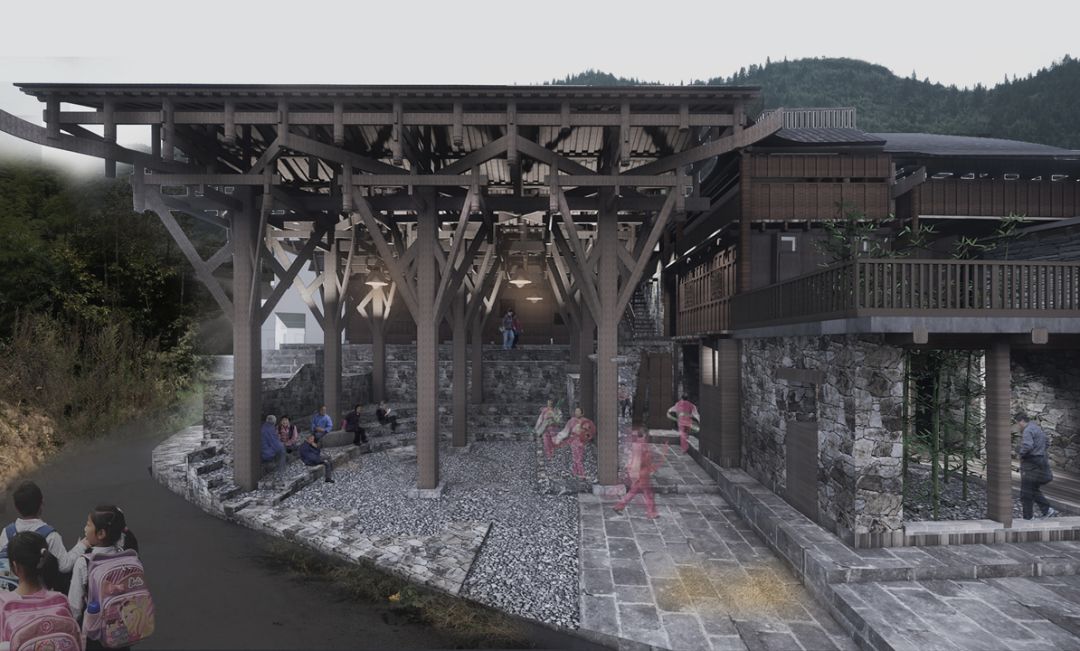

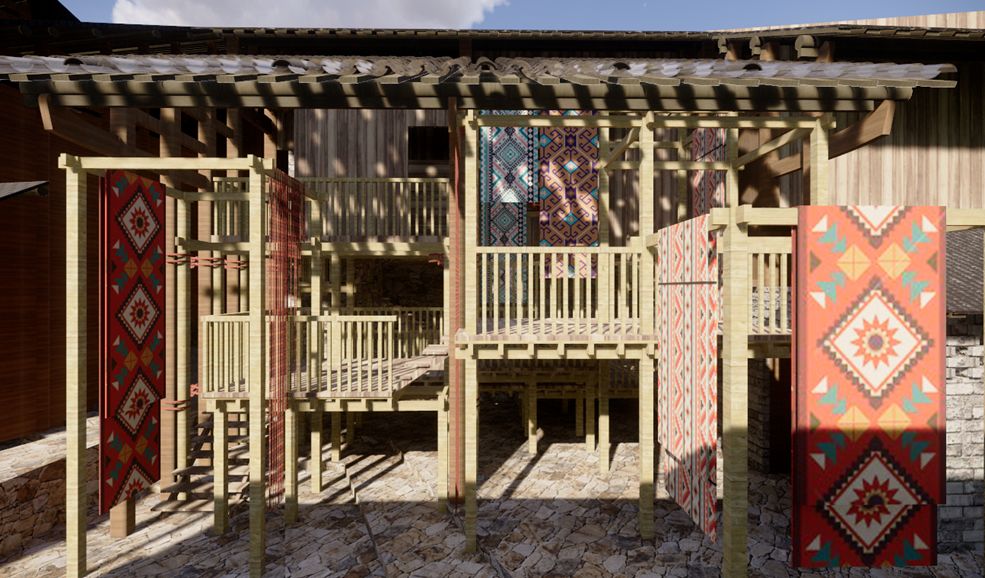
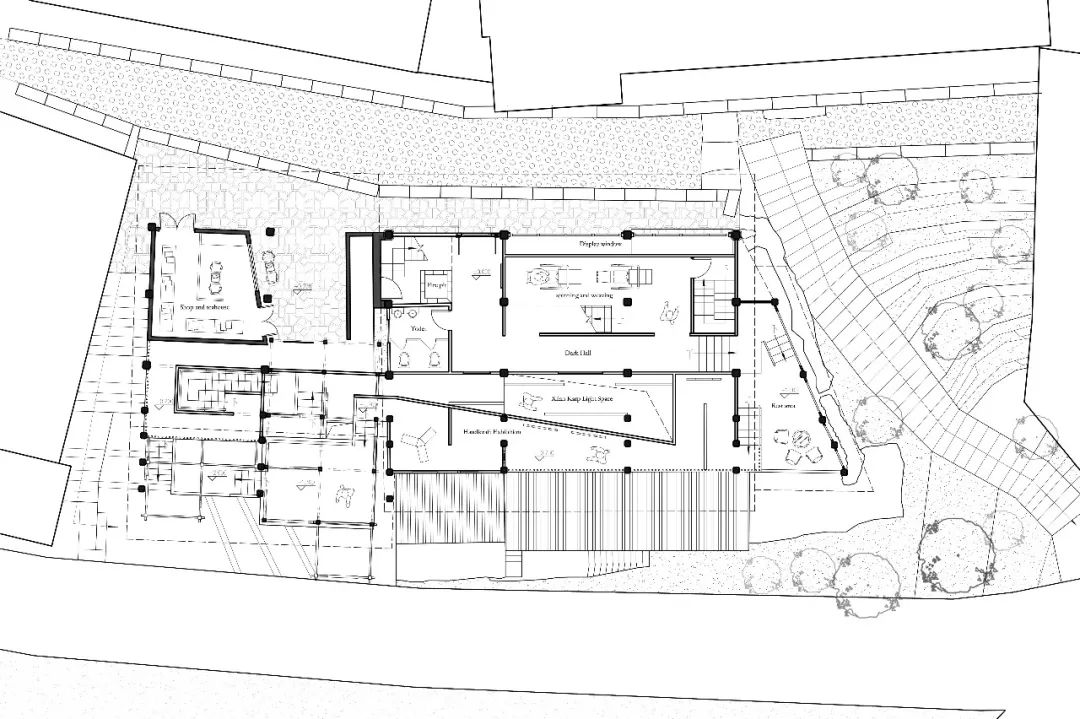
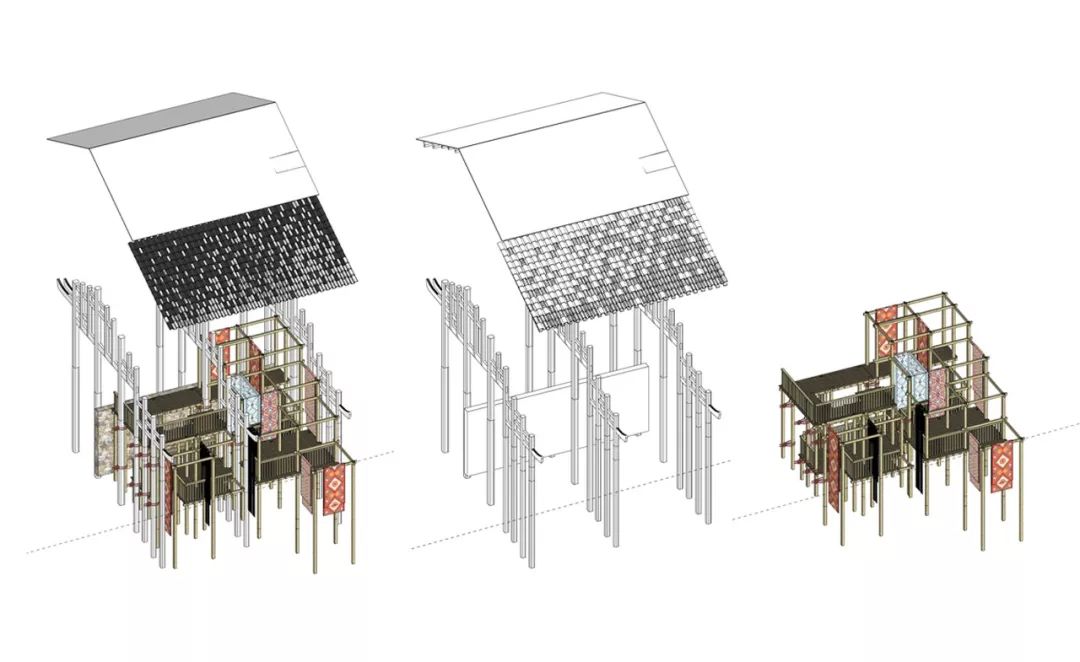
G3/SEUTUJIA PAN-CULTURE RESORT VILLAGE
Group members:Chen Yunxuan, Shen Jie, Ge Shizhao, Xu Shuang (SEU)
Under the background of tourismdevelopment of Tujia pan-museum in Lianghekou, based on the location of oldstreet, the function of its cultural theme resort village is endowed, which notonly improves the local tourism service facilities, but also revitalizes thesleepy village. Enshi prefecture is rich in Tujia culture resources. Salt road,where our site is located, was once the transmission route of Tujia culture.Taking the well-preserved spatial form of it as the material carrier, theabundant local Tujia culture is translated and reproduced. The design selects avariety of representative Tujia characteristic culture and extracts elementsfor transformation and spatial expression instead of simple symbolpresentation. The two buildings at the north entrance of old street serve aspublic facilities, serving as a tea bar for daytime activities andTujia tavern for nocturnal entertainments. The rest of the buildings takesymbols of a specific a Tujia culture respectively. Four buildings are selectedfor individual design, namely bamboo-themed b&b, agriculture-themedb&b, Nuo drama themed b&b, and Tujia music bar with two differentstages facing street and indoor.

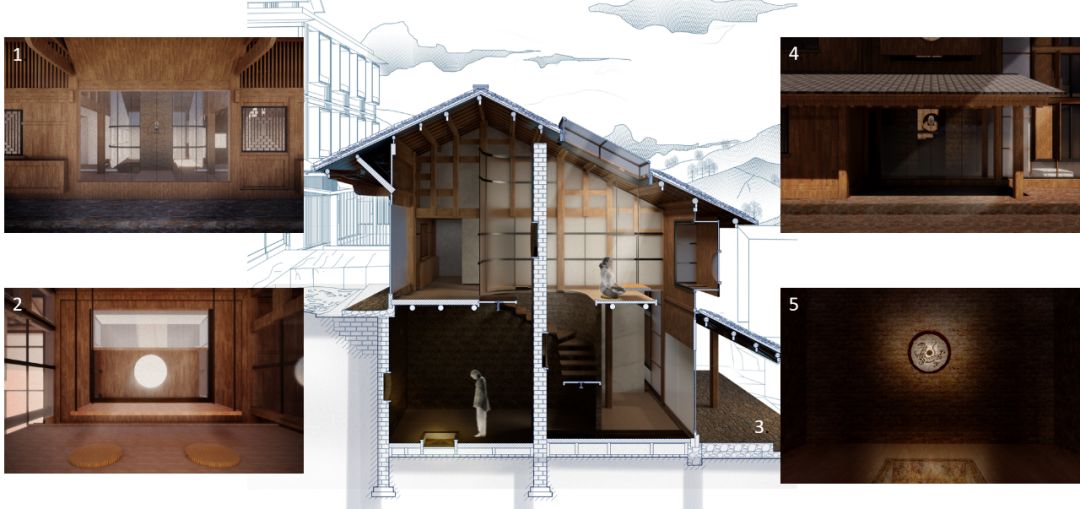
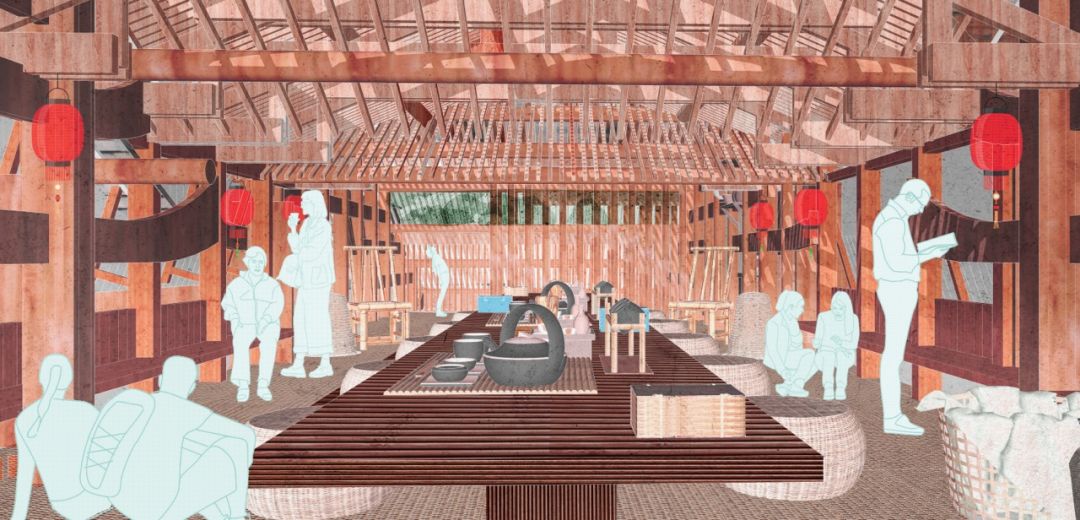

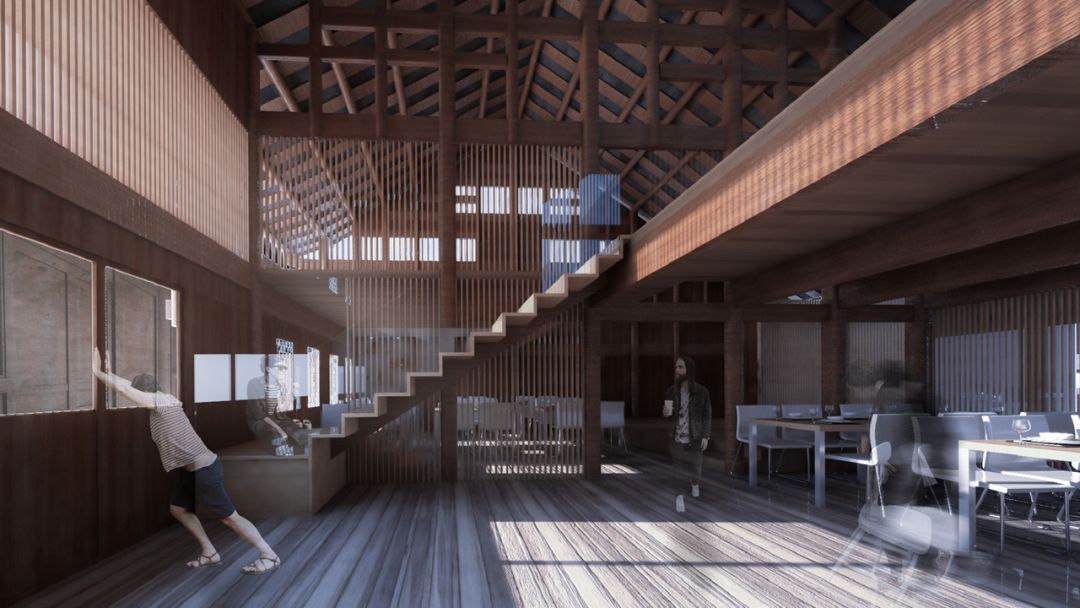
G4/HUST: Story Market
Group members:Wei Di, Zhao Rui , Zhang Shiwei, Wang Peize, Peng Xinyi (HUST)
The theme of “Story Market , on the one hand, indicates that the design addthe new market function of Lianghekou village, on the other hand, it reflectsthe vision of wishing more stories happen here. The problem of Lianghekouvillage is the contradiction between demolition and “preservation”.We choose to retain the transformation function of old street to confront thisproblem, and events becomes the breakthrough to solve the problem. Through theanalysis and evaluation of settlements, streets, buildings and behaviorpatterns, seven prototypes of old streets are extracted, which are divided andreorganized. The ground floor of the old street is used as a market to meet thedaily needs of local residents for shopping. Meanwhile, it also provides aplace for tourists to have cultural experience. Removing parts of the wall onthe first floor to preserve the fireplace space and carry out functionaltranslation. The second floor is used as the salt road historical exhibitionspace, and the corridor is implanted to connect the exhibition route. Inaddition, three nodes are selected, which are respectively defined aswaving-hand Dam, Shiyi Pavilion and Siyue Hall. New functions are implanted toprovide services for residents and tourists. we try to create a homogeneousspace, a place where various events can take place, where stories of residentsand tourists, stories of modern and traditional, and stories of ethnicintegration can be staged...
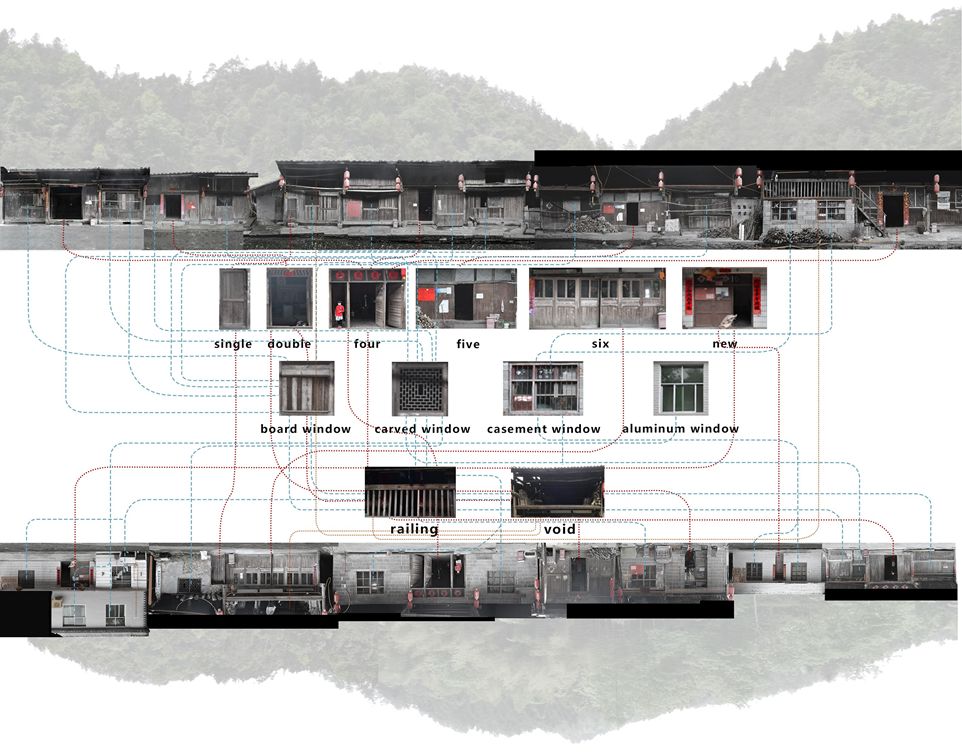
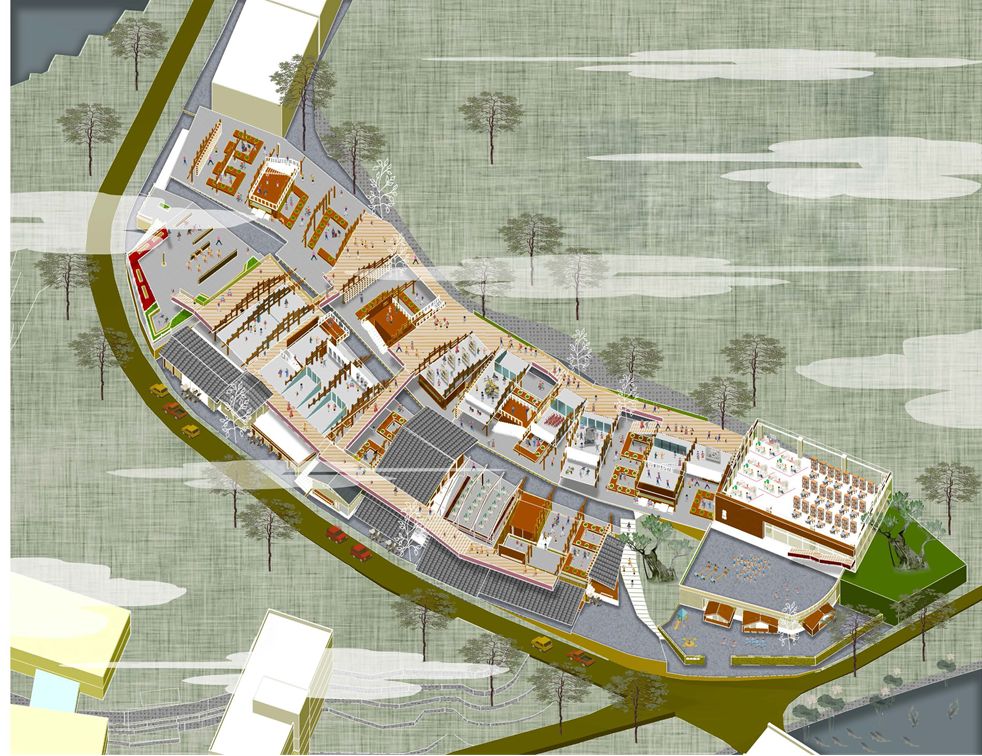
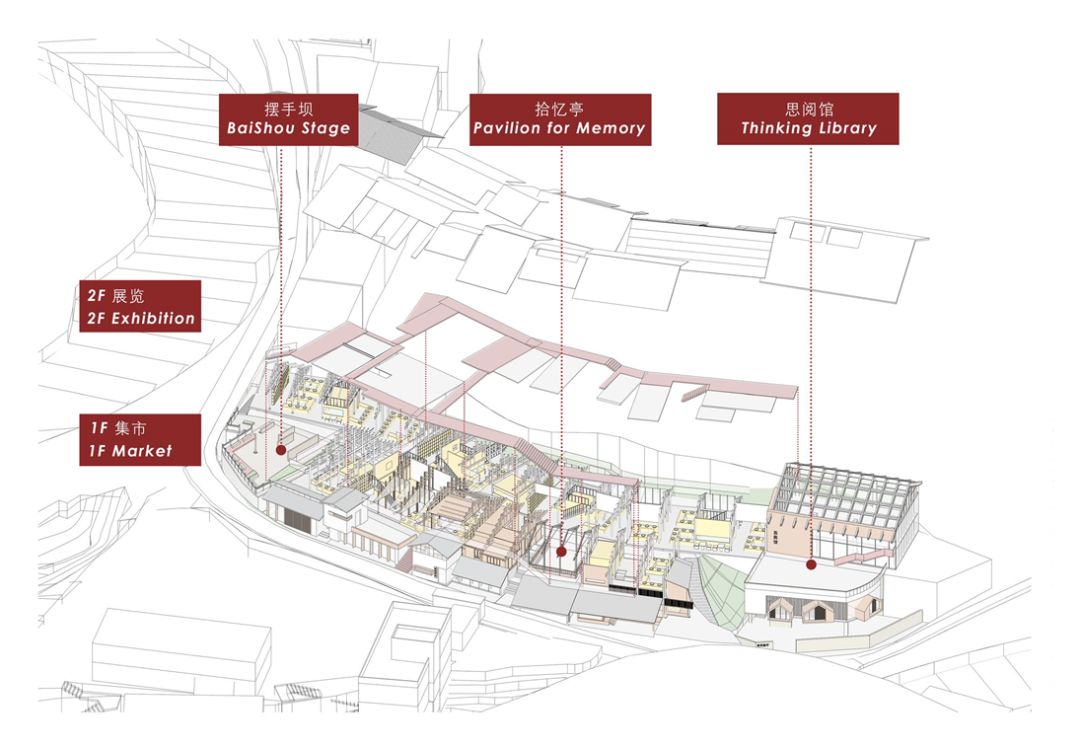

G5/HUST: Particle Fun——Regeneration of LianghekouSalt Road Ancient Street
Design based on the protection and regenerationof ancient villages to improve the cultural identity and cognition of localresidents about Tujia culture including wooden craft, bamboo weaving, and ZilanKarp of folk art. Design may be defined as a culture ecological museumintegrated into the whole PengJia nine villages Pan museum to achieve the aimof regeneration of ancient street.
The granular character of saltis translated. Taking the family fire pot facing the street as the coreelement, the outer wall is demolished and connected to the outdoor space wherepublic social activities happened. As a series of activators, fire pot plays a newrole. In order to emphasize the spatial pattern of buildings in hillswith rivers in Tujia culture. A community library was added to enhancethe cultural attribute. Meanwhile, the tour paths between the back mountainsand the water were opened up, which were connected in the middle to form anetwork spatial layout.
Through these activation strategies, peoplelive and work along salt road in ancient street ecological museum with a largenumber of sceneries of communicating and interesting space mixed up, therevival of Lianghekou village called dialogue · interest.
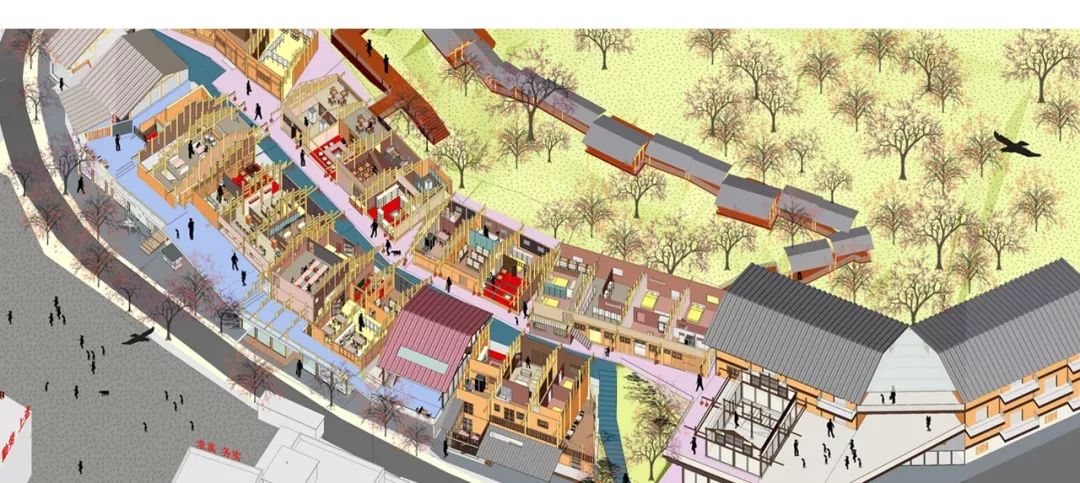
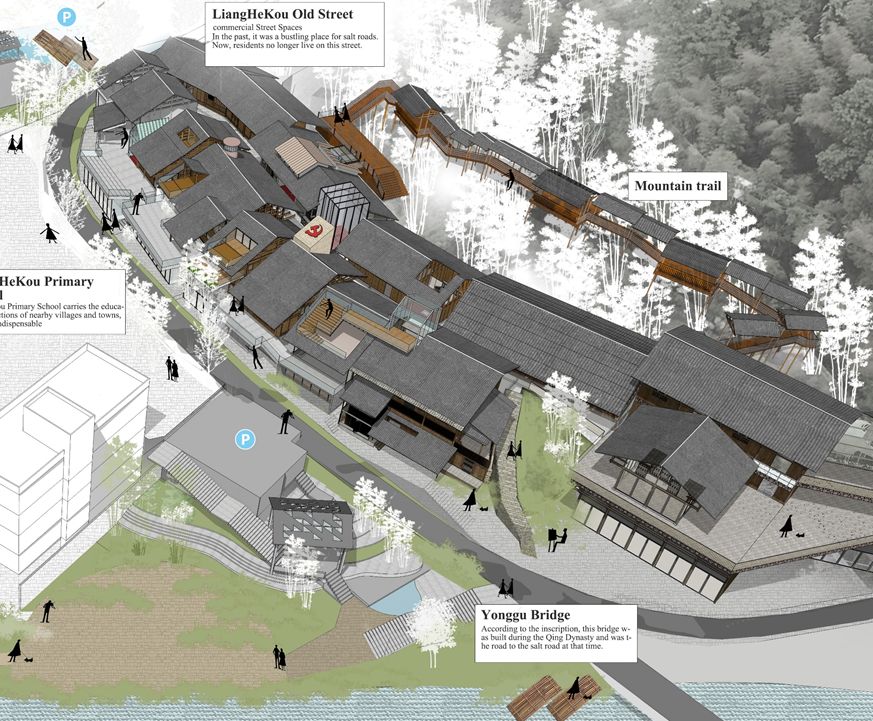

G6/IUAV:Basamento Continuo
Group members:G. Bordin, I. Bottino, D.Burro, D. Bruneri,A. Canton, E. Cielo, M. D'Altoè, A. Marsella,T.Ortolan, G. Rettore, I. Rosolen,A. Sparapan, A. Zen>(IUAV)
On a large scale, in terms of urban planning,the aim was to make Lianghekou part of a route which links different villageslocated along the same valley. Lianghekou will be the starting point of a notmass tourism route along the Salt Road and every village will preserve itspeculiarities. The villages will be linked by a bus line and cycling/pedestrianlines. A change over parking at the entrances of this route will prevent theentry of unsuitable car flows for that kind of roads.
All the most recent and decadent addictionswill be removed and a new basement, at the lowest level of the ancient village infront of the driveway, will contain the new design services blocks and flows.The basement and the architectural elements of the path will have local andrecovery materials such as tiles and blocks. The new functions for both historicaland new buildings will be different and mixed in order to provide for variouskinds of usability: hospitality, residential, commercial and for recreation,but in compliance with the local tradition.
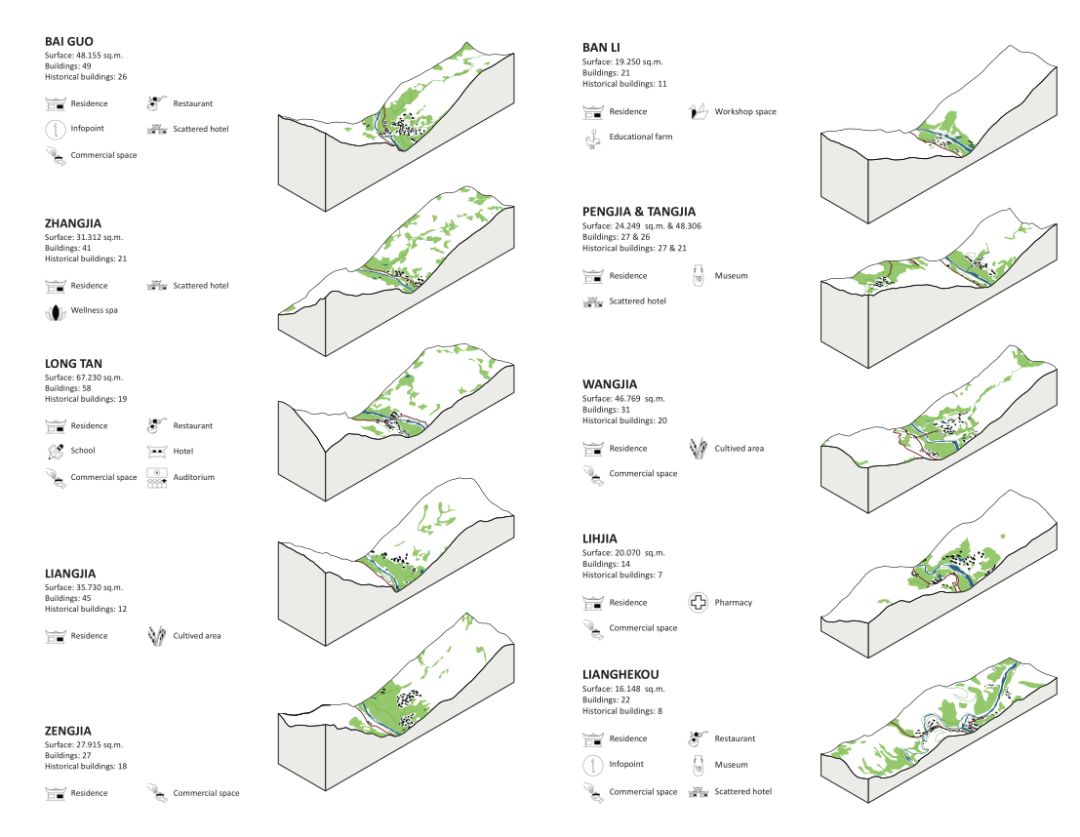


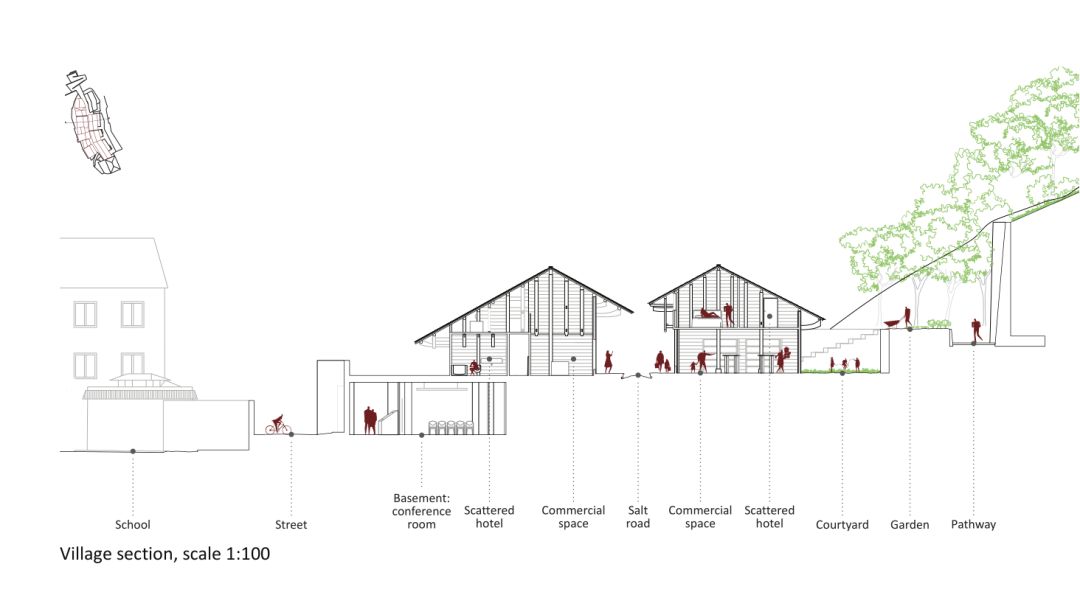
G7/CQU:Village Organism ——History, Healthy andHarmony
Group members:Gu Mingrui,Yang Rui,Li Chen,Wu Shuang,Huang Jinjing,Dai Lianjie (CQU)
The design theme of our group is “VillageOrganism”. For village of existing problems, and through analysis of thevillagers’ 5 min, 10 min, 15 min activity zones andLianghekou village master planning, the first phase of construction positioningfor Old street is the villagers activity center. We put forward spaceprescriptions “respectively in the planning, construction and landscape thesethree aspects, expecting thevillage organismcuresthe injury of Lianghekou Village. In terms of architecture, 12houses were built with file cards, and three buildings with the most potential forinnovation were evaluated for renovation. Traditional architecture 1 is locatedat the end of the whole old street. The design reorganizes the height differenceand makes use of small splitter floors and stairs to create more interestingspace. It hopes to make the static architecture perform through the overlay ofhistorical scenes; Traditional architecture 2 relies on the back mountains.While retaining and optimizing the original residential functions of villagers,the design upgrades the spare space into a homestay, hoping to make the building function evolve harmoniously through peaceful intervention.
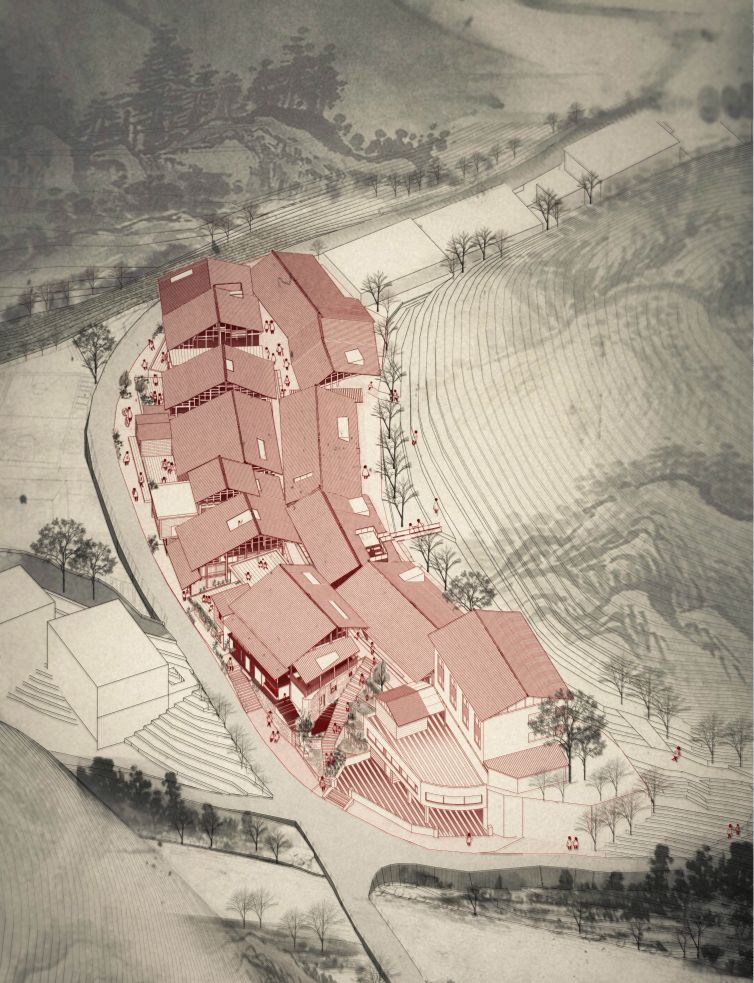
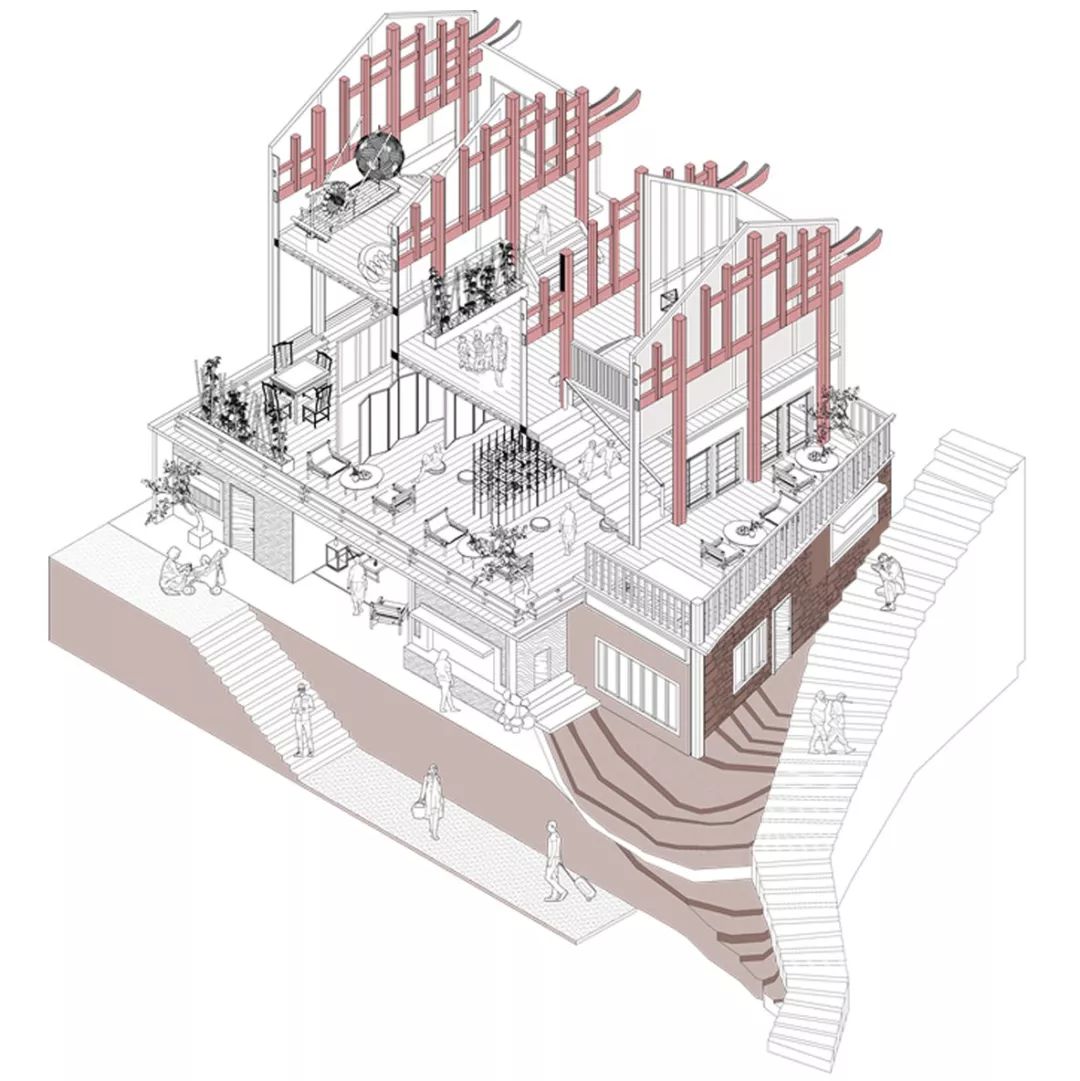
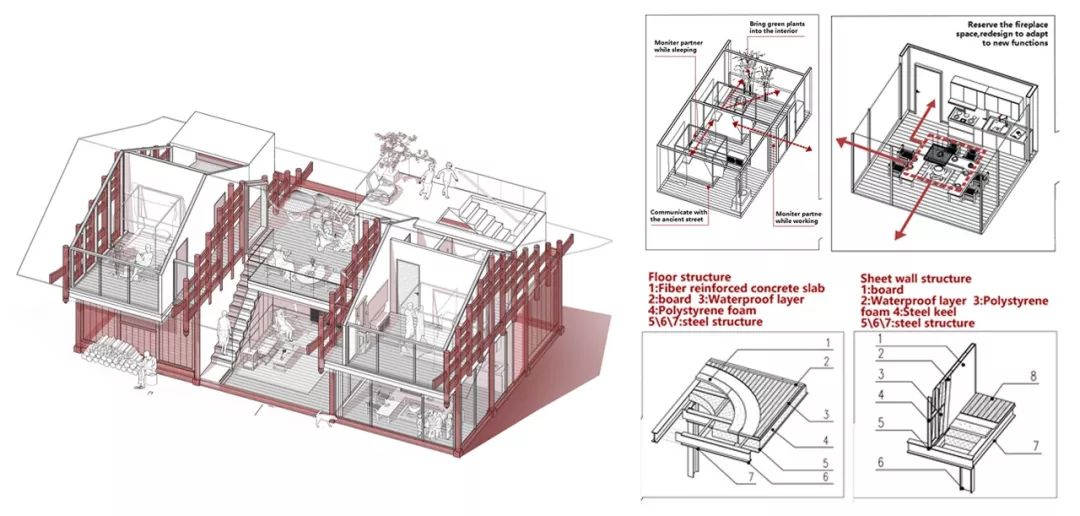
5.Presentation in Tufuri Hall, IUAV
On June 14, 2019,Lianghekou the Regeneration of an Ancient Tujia Village along Salt Road-- the presentation of works was held in Tufuri Hall in Università Iuav di Venezia (IUAV), to reportand communicate the research and design works in the past two months. Each designgroup conducted a 20-minute presentation of design project and teachers from fourschools commented on the final works. After the presentation, all teachers andstudents had a roundtable dialogue, discussed the experience of this joint studio,and made the prospect of the follow-up design deepening, implementation andexhibition works of the results.
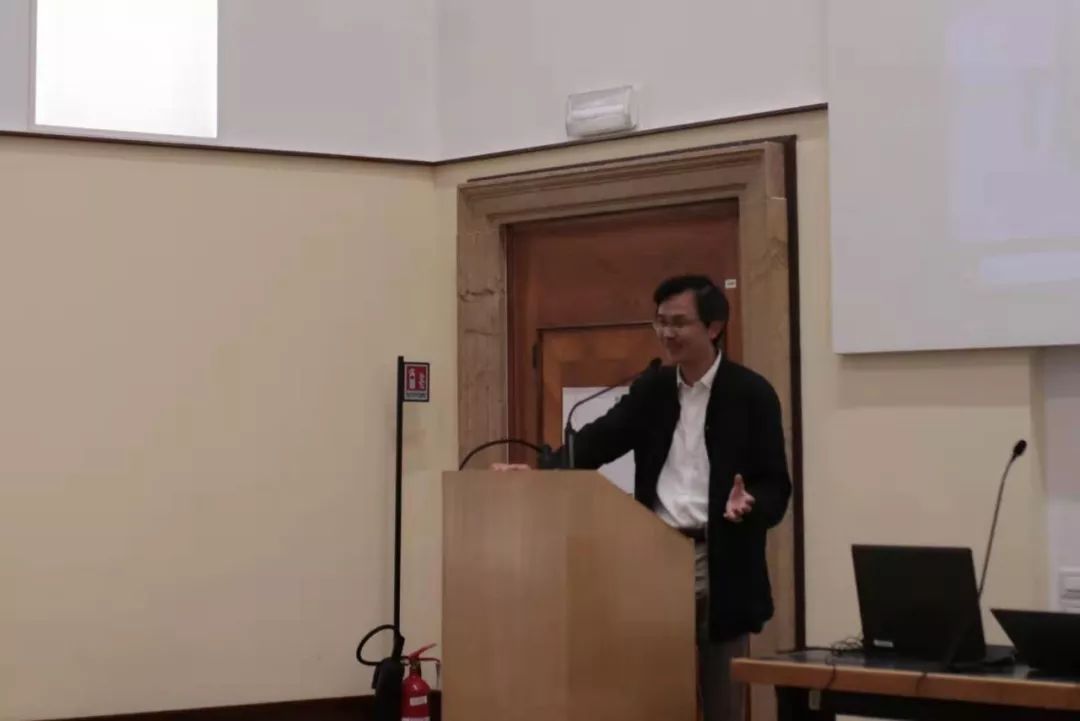

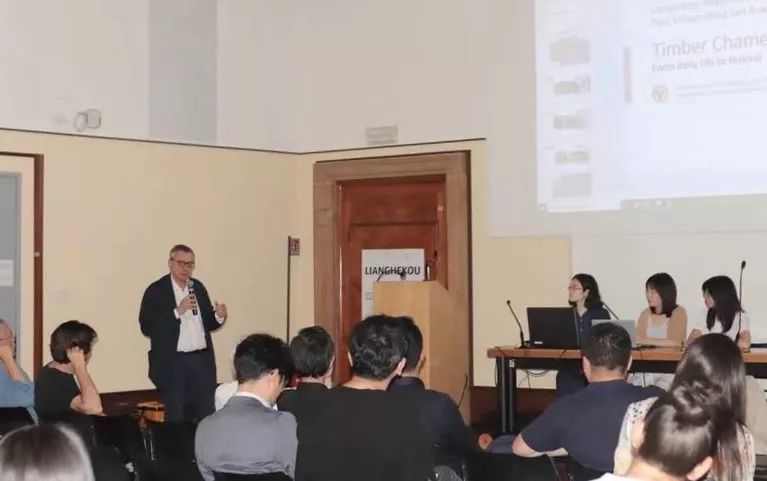
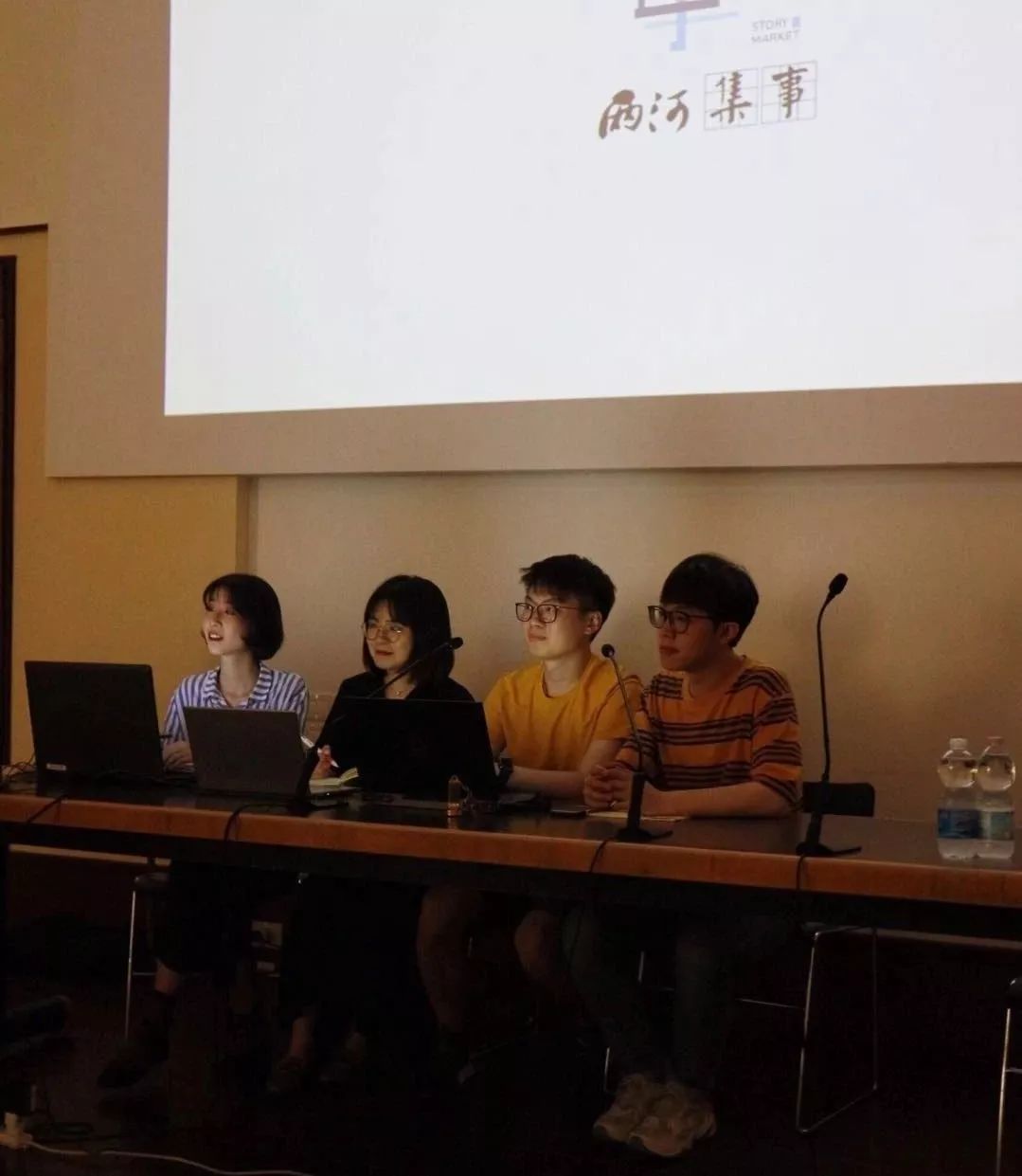
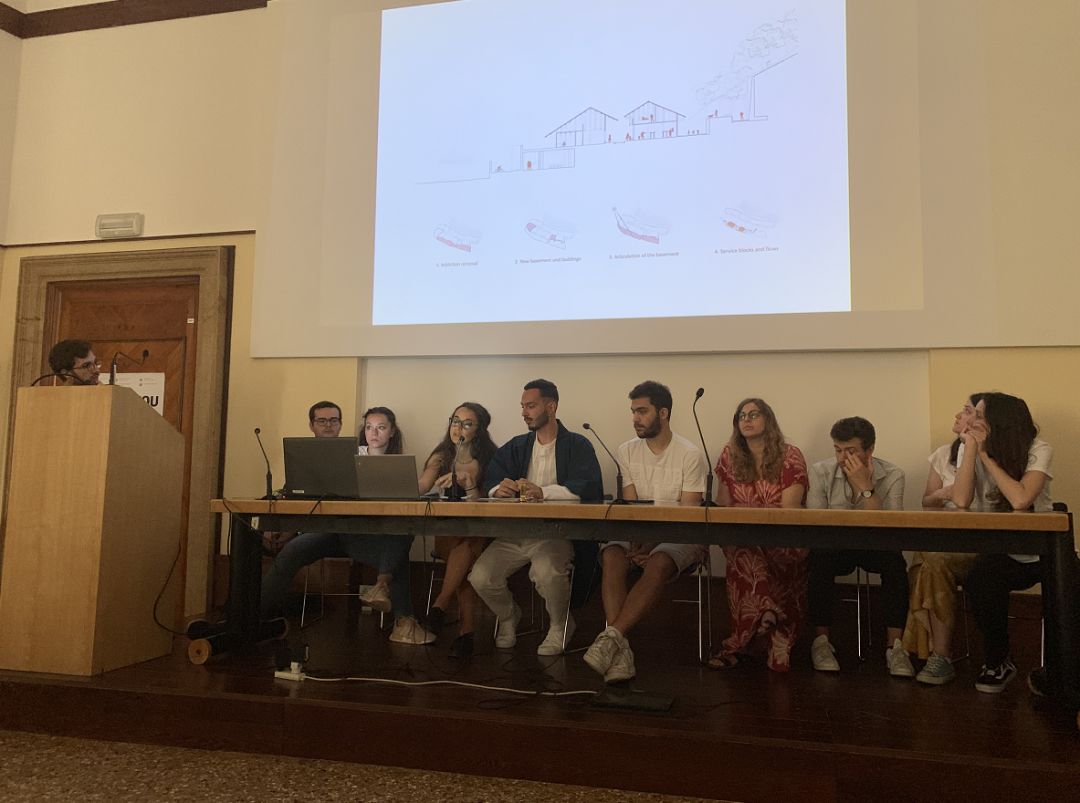
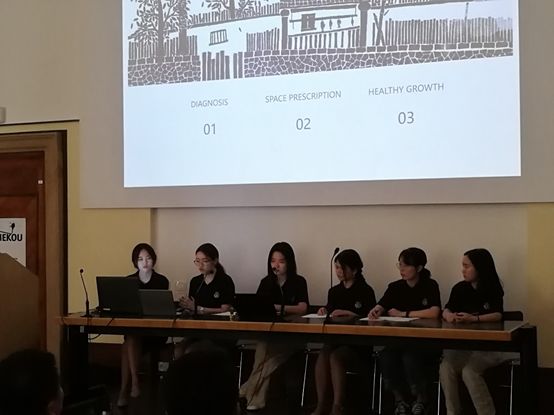
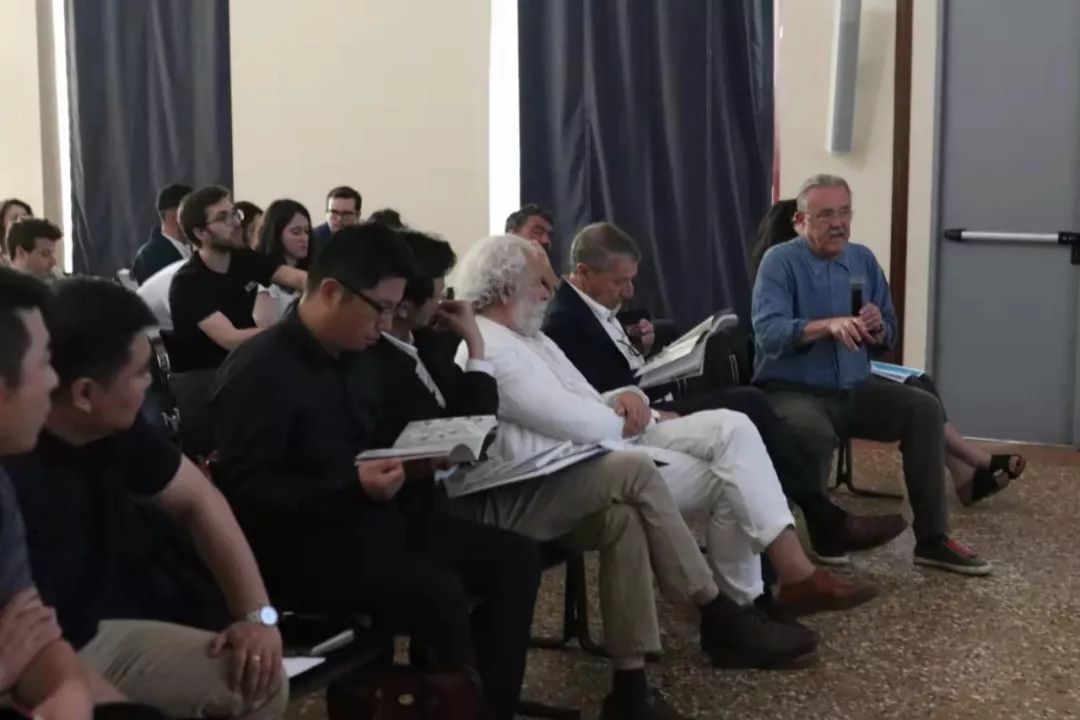
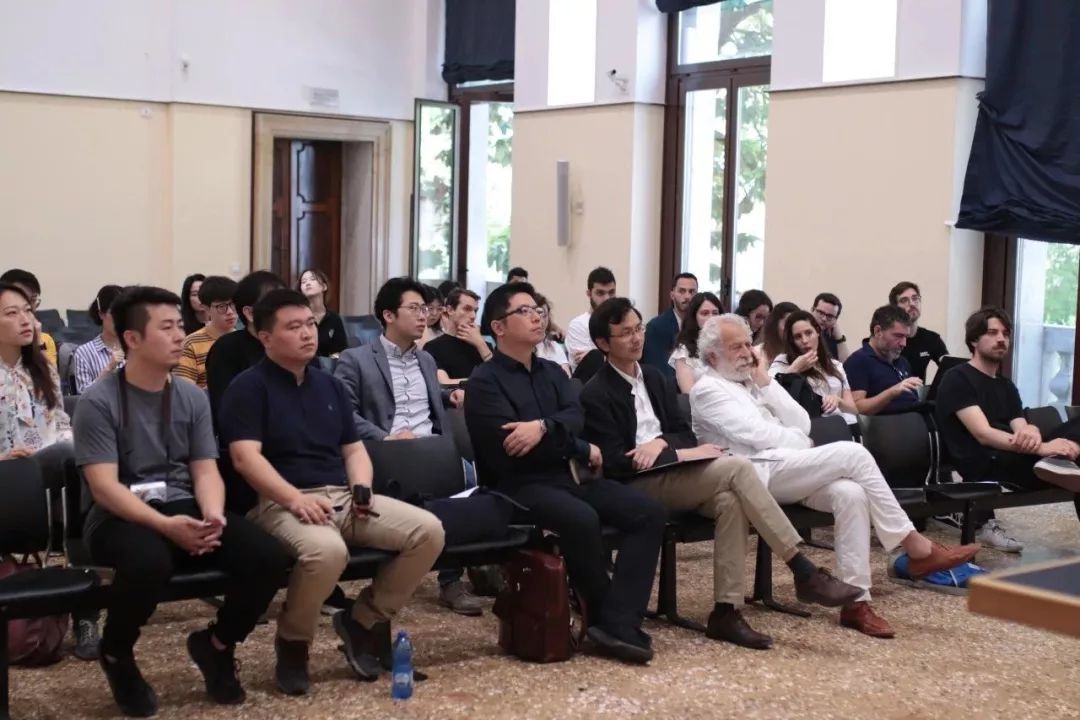
6.Exhibition in Palazzo Zen
All of the design panels including mappings, topicsof researches as well as the seven projects designed by four universities wereexhibited in the EMG dort Art exhibition hall , Palazzo Zen on June 18th. Theexhibition lasted for ten days and attracted much attention from local studentsand media.


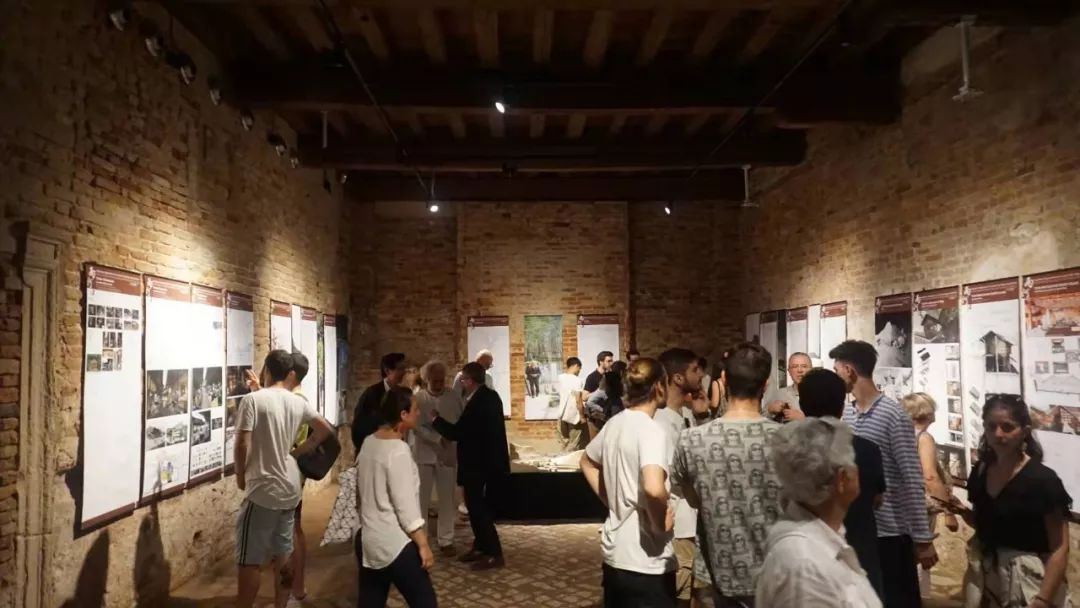


7.Studio summary
Architectural involvement in rural areas needs to focus on localpeople's recognition of their own cultural values. The starting point of thiscourse is how to exert architectural potential power to improve and balance thecontradiction between cultural heritage and modern tourism under theurbanization development. In the teaching process, teachers and students fromdifferent cultural backgrounds communicate with each other, and ideas exchanged.From the perspectives of field ecology, heritage protection, functionalformats, activation and reconstruction, and public space construction ofvillages and towns, various models and strategies are put forward for thefuture development of Langhekou village. The exhibition in Palazzo Zen is notthe display of the final result, but a powerful promotion of this valuableexploration, hoping that through the exhibition and practice to make thecontinuous thinking of education can have a more profound and extensive impact.
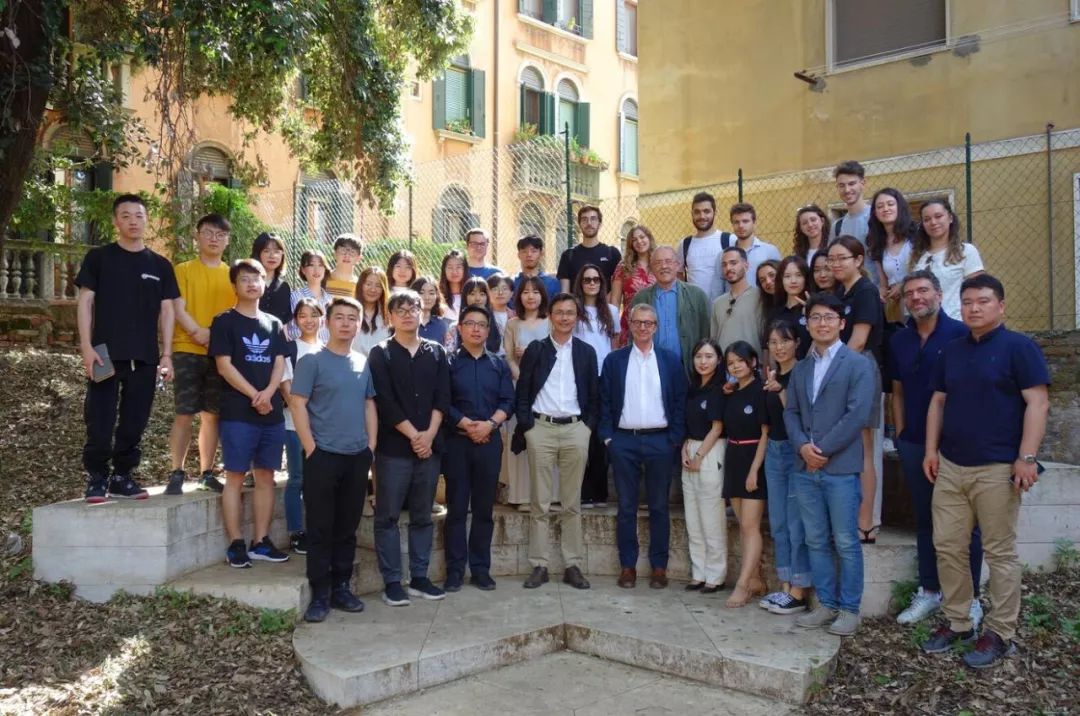
Supports and Funding
The Municipal Government of Hubei EnshiTujia and Miao Autonomous Prefecture, The Municipal Government of Xuanen County
Fondazione EMGdotART
The Education Foundation of Southeast University
Tutors
东南大学:张彤,王川
华中科技大学:李保峰,汤诗旷,王通
威尼斯建筑大学:Aldo Aymonino, Enrico Fontanari, Giuseppe Caldarola
重庆大学:褚冬竹,宫聪
Students
东南大学:徐涵,隋明明,陈斯予,马雨萌,陈韵玄,沈洁,闫宏燕,戈世钊,续爽,王瑢,李心然
华中科技大学:赵蕊,魏迪,张师维,王沛泽,彭欣怡,王宁,何仕轩,田淑颖,刘文玉(湖北美院),王长曦(湖北美院)
威尼斯建筑大学(IUAV):G. Bordin, I. Bottino, D.Burro, D. Bruneri, A. Canton, E. Cielo, M. D'Altoè, A. Marsella, T. Ortolan, G.Rettore, I. Rosolen, A. Sparapan, A. Zen
重庆大学:顾明睿,阳蕊,李晨,吴霜,黄金静,戴连婕
Specially Distinguished Juror
The President ofFondazione EMGdotART,Professor Marino Folin
雅伦格⽂化艺术基⾦会秘书长姚京
东南大学建筑学院副教授邓浩


